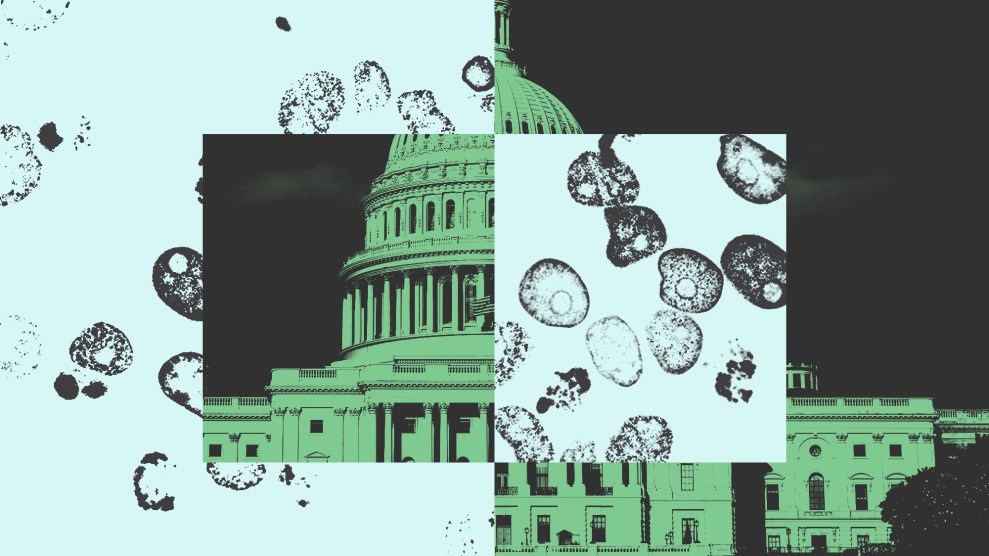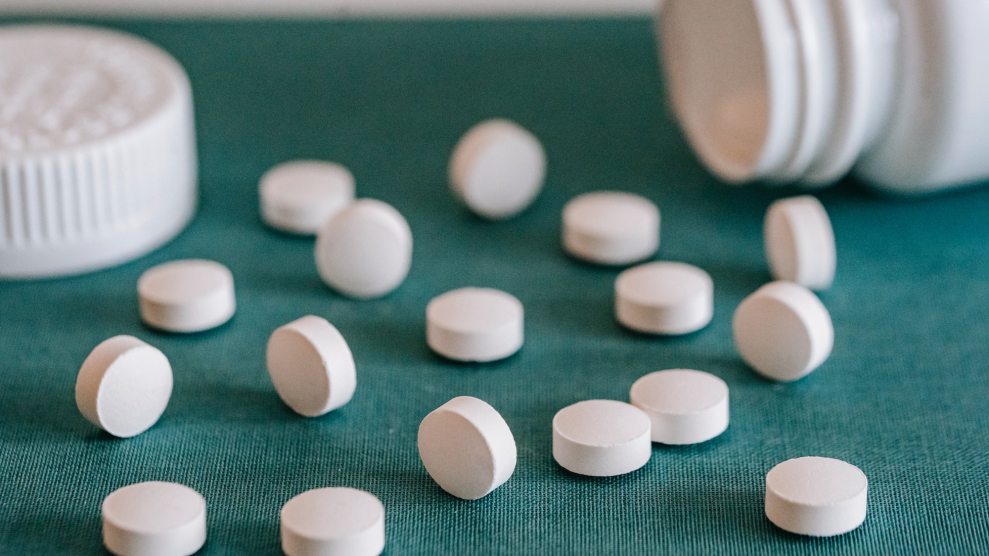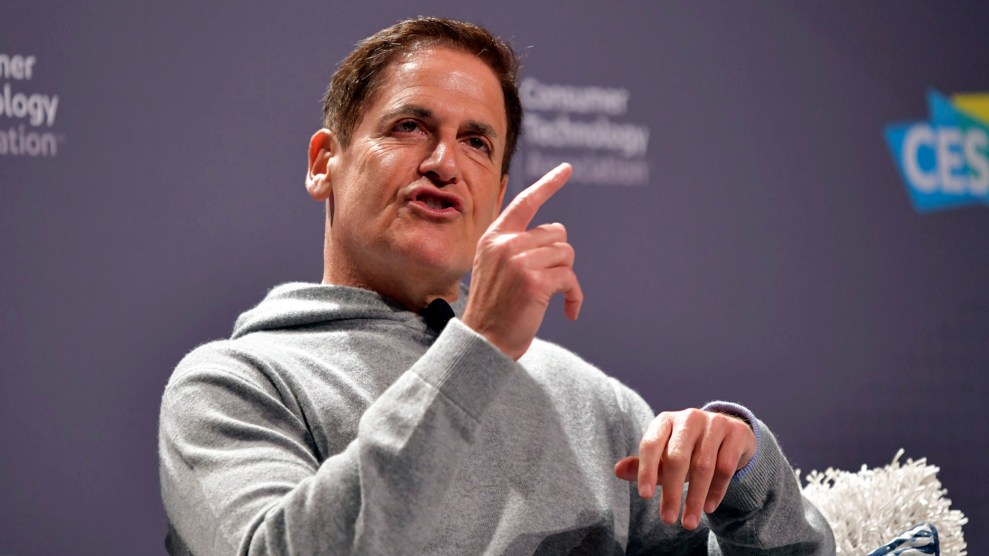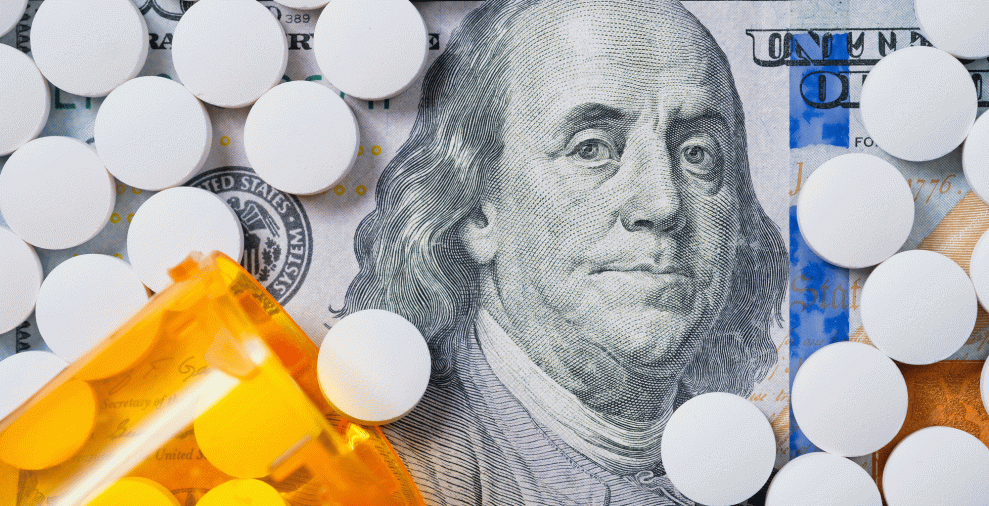
Mother Jones; Unsplash
After three years on prednisone, a steroid not recommended for long-term use, Amy G. saw a new specialist. She had been diagnosed with EGPA, a particularly rare type of the autoimmune disorder vasculitis, which causes blood vessels to be inflamed. When it’s not properly managed, people with EGPA—roughly five in every 200,000 adults—risk potentially fatal complications, including bleeding in the lungs. The doctor wanted to start her on Rituximab, a biologic medication that has been found to help. One problem: Medicaid denied the request.
The doctor told Amy that this wasn’t unusual—health insurers usually wouldn’t cover Rituximab for her type of vasculitis, claiming there isn’t enough evidence that it works for EGPA. But EGPA is a subtype of GPA, or granulomatosis with polyangiitis, which Ritxuimab has received a designation to treat—a designation that earns its manufacturer, Genentech, tax credits for clinical trials and periods of extended exclusivity. And after Amy’s doctor changed her diagnosis to GPA, Medicaid reversed its decision.
Amy is one of many patients meant to benefit from the Orphan Drug Act of 1983, which aims to encourage pharmaceutical companies to do more to treat rare diseases—like different types of vasculitis—with incentives including tax credits for trials, exemption from FDA approval fees of $2 to $4 million per new drug, and a potential seven years of exclusivity after approval. (New drugs in the US get 20 years of patent protection, but that often starts long before they hit the market.) Between 1973 and 1983, only 10 drugs to treat rare diseases were approved by the FDA; people living with rare diseases, and their families, pushed for the legislation as a means for more treatment options. Before effective therapies, GPA’s fatality rate was 82 percent in one year, lending urgency to finding new and better treatment.
In many ways, the Orphan Drug Act has been revolutionary, with more than a thousand conditions gaining new treatments under the act by the end of 2022. It can be especially helpful in encouraging research into ultra-rare diseases, where fewer than 100 patients worldwide may have a condition. However, problems remain—some linked to loopholes in the law—for the roughly one in ten Americans who live with rare diseases, including out-of-pocket medicine fees and difficulty qualifying for off-label uses, despite evidence it could manage their conditions.
“There’s also an approach in which companies will focus on just those narrow niches to get the extra benefits and then only slowly make the drug available to broader populations,” Dr. Steven Pearson, founder of the nonprofit Institute for Clinical and Economic Review, told me. In May, a JAMA research letter found six examples since 2008, including Eli Lilly’s ramucirumab, where drugs granted orphan designation were approved as non-orphan consumer drugs within five years. There is no existing regulatory framework where pharmaceutical companies would lose any incentives they received for an orphan drug if non-orphan designations are approved shortly after.
Exclusivity can also prohibit patients from getting a more effective drug, says Sneha Dave, executive director of the patient advocacy group Generation Patient. Dave points to Jazz Pharmaceuticals’ orphan-drug exclusivity for Xywav, taken every four hours at night by people with narcolepsy. Jazz is suing the FDA for approving Lumryz, an extended-release narcolepsy drug that patients only have to take every eight hours. Jazz argues that Lumryz’s manufacturer, Avadel, shouldn’t be able to “bring it to market because Jazz has that exclusivity,” Dave said.
Another way to maximize exclusivity is to later apply for separate pediatric approval. After Rituximab lost exclusivity in 2018 for adults with GPA and MP (microscopic polyangiitis), more affordable biosimilars were approved to treat those conditions. But not for pediatric patients. In 2019, the FDA approved another Genentech application for orphan drug status for Rituximab to treat GPA and MP—this time in children. Manufacturers can apply for approval to treat several conditions at once—in 1994, for example, Jacobus Pharmaceuticals’ dapsone was granted orphan drug status to treat a broad range of severely immunocompromised patients. Many just don’t, in part because they may not be able to get exclusivity.
Genentech did not respond to questions about its application for orphan drug designation of Rituximab for pediatric use for vasculitis patients, but the company said in an email that it “look[s] to our patient communities for valuable insights to help us deepen our understanding of their day-to-day realities and understand what is important to them.”
Rituximab was first approved by the FDA in 1997 through the standard, non-orphan-drug process, to treat non-Hodgkin’s lymphoma. Nearly a decade later, the FDA gave it orphan drug designation to treat GPA and MP, two rare forms of vasculitis. In 2011, after the FDA deemed it safe, it became available to only those vasculitis patients, and the lucrative exclusivity window kicked in some 14 years after Rituximab was first sold.
Off-label, Rituximab can help people with other rare diseases, including other types of vasculitis like HUVS and Behcet’s disease. In fact, a majority of Rituximab prescriptions in recent years have been off-label, according to a 2020 study in the Journal of Managed Care and Specialty Pharmacy. But insurance companies may refuse to cover off-label use, according to health insurance lawyer Scott Glovsky. In addition, Glovsky said, “many plans have very rigid medical policies that limit the circumstances in which they deem biologics medically necessary.”
Before insurance, Rituximab treatment costs about $20,000 for two initial infusions (typically followed by maintenance treatments every four to six months). Roche—the parent company of Genentech, which produces Rituximab in the US—reported sales of around $1.5 billion in the US in 2022, down from $3.9 billion in 2016, when it still held exclusivity for adult vasculitis patients (Rituximab is co-marketed with Biogen in the US).
Orphan drugs in general can be unaffordable, with an annual average out-of-pocket cost of $866 in 2018 for people on private insurance. The same orphan drugs can be cheaper in other countries: in France, where a government committee negotiates costs before drugs hit the market, 18 months of Rituximab treatment for vasculitis costs less than $10,000 on average, which French healthcare covers often in full.
In contrast, the United States, Dr. Pearson says “does not have some process for scrutinizing the price when these drugs first are launched.” This contributes to a system, Dr. Pearson notes, where “we end up with a lot of problems both with access and with affordability.” Under the Inflation Reduction Act, however, the US government will start negotiating the cost of some existing drugs.
The onus of increasing orphan drug availability doesn’t just fall on pharmaceutical companies. There have been attempts to change narrow regulatory approaches to rare disease development at the FDA and National Institutes of Health: the FDA’s Accelerating Rare Disease Cures program, launched in 2022, is looking to see how clinical trials can better serve communities of rare disease patients.
“In the regulatory space, we need to be approaching things as groups of disorders, not just one disease at a time,” said Dr. Eric Sid, program director for rare disease research at the National Center for Advancing Translational Sciences, on a November media call. What this would look like in practice remains to be seen. NCATS plays a leading role in the Bespoke Gene Therapy Consortium—a partnership between the NIH, FDA, pharmaceutical companies, nonprofits, and other groups—that aims to streamline the development of gene therapies for rare diseases. Instead of investigating one condition at a time, the consortium will trial therapies for four to six different conditions simultaneously.
In the past few years, members of Congress have attempted to close a specific loophole: When pharmaceutical companies first apply for orphan status for a drug, they have to show that they couldn’t break even without its seven-year exclusivity period (or that it would treat fewer than 200,000 people). But if they reapply for a different use—such as an updated version of the drug—they don’t have to prove that they need orphan status to recoup their investment.
In both 2020 and 2021, bills passed the House that would have closed that loophole. But neither were voted on in the Senate, one amid the distraction of January 6, the other dying in committee. House Rep. Madeline Dean (D-Pa.), a sponsor of both bills, said closing the exclusivity loophole was important to “ensuring market competition, reducing barriers to the development of new treatments and ultimately to supporting patients.” In December 2017, the FDA’s then-head told Kaiser Health News he was open to revisiting the financial incentives pharmaceutical companies received for orphan drugs—but that was apparently more talk than action.
This article was supported by the National Press Foundation’s Covering Rare Diseases fellowship.













